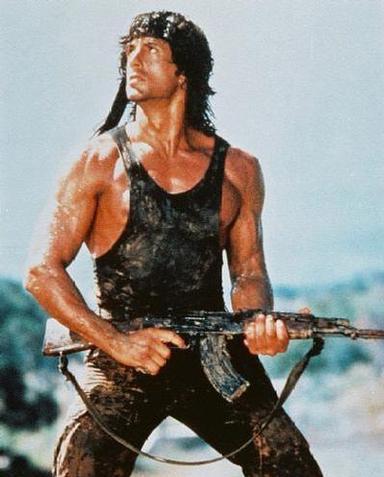Usually when you think about the politics of art, you’re thinking about ideology. Nadim Damluji’s recent post in which he questioned the representations of arabs in Craig Thompson’s Habibi is a case in point. So are Jeet Heer’s comments from a while back about Eisner’s use of racial stereotypes. Another example is Alyssa Rosenberg’s recent post where she argues that the movie In Time articulates a surprising and pointed critique of capitalism. I was more skeptical about In Time,, but either way, in instances like these, the political charge of a work comes from the point it’s making, either intentionally or otherwise. The politics of art is what the art says.
There’s another way of looking at politics in art, though. Recently I read this pdf by Gordon Dahl and Stefano DellaVigna titled “Does Movie Violence Increase Violent Crime?” Like the title says, the paper is a study of the effect of violence in film on violent crime rates. Here’s the abstract:
Laboratory experiments in psychology find that media violence increases aggression in the short run. We analyze whether media violence affects violent crime in the field. We exploit variation in the violence of blockbuster movies from 1995 to 2004, and study the effect on same-day assaults. We find that violent crime decreases on days with larger theater audiences for violent movies. The effect is partly due to voluntary incapacitation: between 6 P.M. and 12 A.M., a one million increase in the audience for violent movies reduces violent crime by 1.1% to 1.3%. After exposure to the movie, between 12 A.M. and 6 A.M., violent crime is reduced by an even larger percent. This finding is explained by the self-selection of violent individuals into violent movie attendance, leading to a substitution away from more volatile activities. In particular, movie attendance appears to reduce alcohol consumption. The results emphasize that media exposure affects behavior not only via content, but also because it changes time spent in alternative activities. The substitution away from more dangerous activities in the field can explain the differences with the laboratory findings. Our estimates suggest that in the short run, violent movies deter almost 1,000 assaults on an average weekend. Although our design does not allow us to estimate long-run effects, we find no evidence of medium-run effects up to three weeks after initial exposure.
What Dahl and DellaVigna found was that the movies had an important effect not through what they said, but through the amount of time they took up. People who are seeing violent movies are, presumably, people who are disproportionately interested in violence (i.e., for all intents and purposes, young men.) If these people interested in violence are watching a movie, they are not committing acts of violence. Moreover, they are not drinking, and therefore are not priming themselves to commit more, and more violent acts of violence. The ideological content of the film may be anti-capitalism or racism or the null-set; in terms of actual violent acts committed, it doesn’t really matter. What matters is butts in chairs.
Another example of this dynamic is discussed in Anne Allison’s book Permitted and Prohibited Desires: Mothers, Comics, and Censorship in Japan. Allison talks at length about the Japanese obento, a lunch which mother’s prepare for their children in nursery school. The obentos are extremely elaborate; the dishes are to be aesthetically and nutritionally balanced. Moreover, children at school must eat all of their obento, and must do so within a prescribed time period. Mothers, therefore, work to make the obentos attractive and easy to eat. Food is cut into small, easily eatable pieces and is often shaped into cute figures (smiley faces, ducks, crabs, worms) which will entice the child.
As Allison notes, this is an extremely time-intensive process.
Women spend what seems to be an inordinate amount of time on the production of this one item. As an experienced obento maker myself, I can attest to the intense attention and energy devoted to this one chore. On the average, mothers spend twenty-five to forty-five minutes every morning cooking, preparing, and assembling the contents of one obento for one nursery school child. In addition, the previous day they had planned, shopped, and often organized a supper meal with leftovers in mind for the next day’s obento. Frequently women discuss obento ideas with other mothers, scan obento cookbooks or magazines for recipes, buy or make objects with which to decorate or contain (part of) the obento, and perhaps make small food portions to freeze and retrieve for future obentos.
Obentos are very much an aesthetic product; Allison points out that mothers in Japan often express their creativity through the creation of elaborate, funny, cute, and beautiful obentos. But the sheer time and energy required to make the obentos — and more broadly, to shepherd children through the highly regimented and demanding educational system — is itself a form of social control. Allison reports one mother saying that “being a mother in Japan meant being a mother to the exclusion of almost anything else.”
Allison points out that the mothers she spoke to weren’t frustrated; they were devoted to their children, to being good mothers, and even to the pleasurable aesthetic frisson which inhered in creating beautiful obento’s. Similarly, movie-goers aren’t coerced into seeing violent movies; they go because they want to, because they enjoy it, and even because they’d rather see a violent movie than engage in actual violence themselves. Art is pleasurable, and people are moved by pleasure.
In particular, they are moved to spend their time, whether in watching a film or in making an obento or in typing out a blog post. Art manipulates, not just through its message, but through the energy and hours you devote to consuming it or creating it. In fact, you could say that art and its pleasure consume and create you, whether you be blogger or non-violent watcher or dedicated mother. Maybe the politics of art is not really meaning at all. Maybe it’s praxis.


